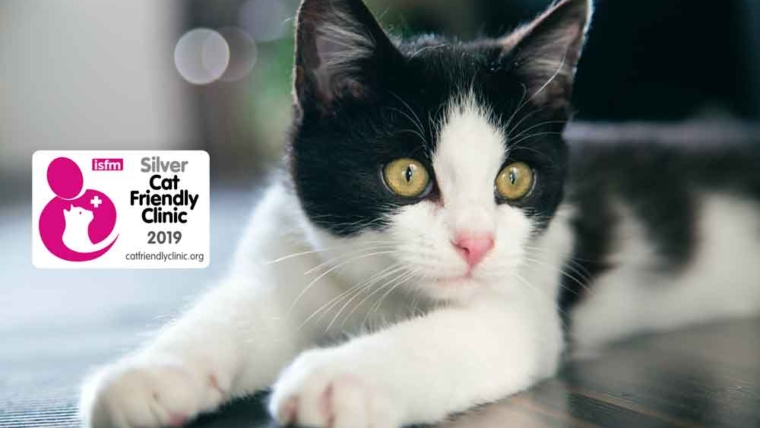The stress that comes with being a new parent can be overwhelming, and although you can’t exactly compare kittens to human babies- they can still feel challenging. To ease your burden, we’ve taken the liberty of compiling this guide to caring for your kitten, so read on to equip!
Checklist
- Food and water bowls
- High quality cat food
- A litter tray and cat litter
- Cat bed
- Cat carrier
- Toys
We’ll be breaking it down into 6 basic sections:
- Shelter
- Food
- Social life
- Exercise
- Health
- Litter training
Shelter
As felines are known to be little explorers, you’ll need to make sure your house is kitty-proof. The best way to do this is by looking at your home from a kitten’s point of view, so to save you the trouble of having to get on your hands and knees, here’s a list of preparations you might want to run over:
1. Make a safe space
Felines are extremely sensitive to external stimulation. This means that the regular hustle and bustle of a household can bombard their senses and cause distress. Thus, creating a quiet room for your kitten is essential.
Your kitten will need a place to sleep, food and water bowls, and a litter tray. It’s best to leave your kitten in this room for the first few days and allow it to get used to the atmosphere in your home, after which you can gradually allow it to explore the rest of the house.
If your kitten is under 8 weeks old, you’ll need to take measures to ensure that it is kept warm, as they are unable to regulate their body temperature on their own.
Being away from its mother, your kitten will also need lots of affection for it to feel safe and secure in its new environment- so make sure you’re giving your new baby lots of love and attention.
After a while, your kitten will grow more independent, and you can gradually loosen these measures.
2. Locate all potential hiding spots

Your kitten’s bound to explore its new home, and with their notorious habit of hiding in tiny spaces, will most definitely find a spot to hide.
These spots tend to be dark and warm, which means you could find your kitten crouched behind the refrigerator, stretched out across a windowpane, or even in a paper bag.
To save you the panic of being incapable of finding your new furry friend, take a walk around your home and take note of where these places are. This way you’ll know exactly where to find your kitty. If any of the spots feel unsafe, make sure to block them.
3. Secure your wires
Kitties are curious creatures, and cables and cords trigger their hunting instincts by mimicking a mouse’s tail- giving them all the more reason to play with it.
Try taping your wires down or moving them to a safer area. This will save both your wires and your kitty.
4. Move your valuables
Your kitten might make its way up your curtains or on to your shelves, so you’re going to want to ensure that it won’t knock over anything you’ll miss- or, more importantly, anything that could possibly injure it.
Food
What your kitten should be eating

If your kitten is under 8 weeks old and has weaned off its mother, then you may begin to introduce it to solid foods.
If not, then you can purchase a kitten milk formula recommended by your vet and bottle-feed it every two hours. When doing this, it is best to stick to a schedule.
Growing kittens need plenty of calories in their diet, which is why you should feed it high quality cat foods that offer these things. High quality cat food will also be easy to digest and rich in proteins.
You can begin by feeding your kitten 4 times a day, and then gradually reduce it 2 meals after a few months. You might find that “free-feeding” becomes the ideal method during this stage.
What your kitten shouldn’t be eating
While it may feel like the most natural thing to give your kitten some milk, seeing how the pairing is regularly portrayed, it is definitely something you should avoid. To learn more, check out our article that breaks down the reason why.
Once they move on to solid foods, kittens lose the ability to break down the lactose in milk and can face several gastrointestinal complications upon consumption.
You should also avoid giving your kitten alcohol, tea, coffee, chocolate, raw meats, grapes, raisins, onions and garlic. As the last two are regularly used in human food, this also means that you shouldn’t give your kitten table scraps.
If you choose to give your kitten homemade food, it’s best to consult your vet to create a meal plan curated for your kitten.
Hydration
If your kitten doesn’t seem to be frequenting its water bowl as much as it should, try including wet food into its diet. This ensures that it is at least getting a certain amount of water each day.
On another note, many felines tend to prefer moving water, in which case you can purchase a cat water fountain.
A Social Life

Many people say that cats are unfriendly and aggressive, however, this stereotype comes from the behavior of those that haven’t been properly socialized. In reality, cats are social animals and have the potential to be extremely affectionate.
The ideal window for introducing your kitten to new people and animals is while it’s under 14 weeks old, however, with a little time and effort, older cats can be socialized just as well.
1. Children
If you have a family, you’re going to want to expose your feline to children. When faced with the irresistible delight of a little kitten, kids are bound to touch, prod and poke, and although their intentions may be pure, they could be left with scratches and bites.
Make sure that interactions between the two take place under adult supervision and a careful eye, and allow your kitten to have frequent breaks. Before you realize it, your kitten will adjust to your children.
2. Cats
Cats are extremely territorial, and will therefore need a few days to adapt to the scent of your new kitten in its home before suddenly being confronted with it. Thus, it’s best for this introduction to take place after a few days.
Introducing the new scent to your cat with positive affirmations like treats will ease their meeting, which should take place under your supervision. Allow them to meet for a little while each day, perhaps during mealtime.
After plenty of hissing, some distress and lots of patience, your new cat and kitten will become used to each other’s company.
3. Dogs

When you’re introducing your kitten to your dog, ensure that it does not take place in their safe space. In fact, it would be best if your dog didn’t have access to this space at all.
As your dog is more likely to be energetic, it’s best to tire them out beforehand by taking them on a walk. While your dog may mean no harm and just want to play, its sudden movements may frighten your kitten.
Try keeping your dog in a cage for the initial meeting, or hold them at the end of a leash. This will allow your kitten to set the pace, and create a barrier that allows them to see each other without being close enough to attack.
Once the two have been able to get a good sniff of each other and seem calm and happy, you can gradually let them meet in closer settings. If your cat begins to hiss or looks distressed, take them back to their safe space and try again later.
It’s always best to make sure that your kitten has had all its necessary vaccinations and is in good health before coming into contact with any of your other animals.
Exercise
Playing with your kitten for at least 20 minutes a day can provide beneficial mental and physical stimulation, and also be a great bonding experience.
Seeing that this is the age during which its instincts come to the surface, your kitten will most likely enjoy games that incorporate predatory play. Try toys that will allow your cat to hunt, catch, and be rewarded with its “prey”, such as a toy mouse tied to the end of a string.
Try playing with your kitten before bedtime to ensure that they’re ready to sleep when you are.
Health
A health checkup at the clinic is the best way to start your journey with your new kitten. This is your time to get to know all the details on any vaccinations, deworming or any medication your kitten might need.
You can start off by taking your kitten in on a monthly basis for regular checkups, and increase the time gap between them as they grow older.
Litter training

To any new cat owner, the thought of litter training may be the ultimate burden. However, cats have a natural tendency to bury and cover their waste to hide their scent from other animals, so training your kitten to use a litter tray won’t be too hard.
All you need to do is fill the tray with litter, and leave it in a place that is easily accessible. When you bring your kitten home, show it the box and allow it to sniff around and explore it.
If you have any other cats, it’s possible that your kitten will watch and learn from them. If not, their natural instincts will take over.
Then, when the time comes, your kitten will naturally be drawn towards the litter. You can encourage your kitten to use the litter more with positive affirmations, try offering it a treat every time.
And that’s it! Now you’ve learnt the basics of welcoming a new kitten into your home. So take a deep breath, and get ready to push through the next few weeks to make a life-long friend!



